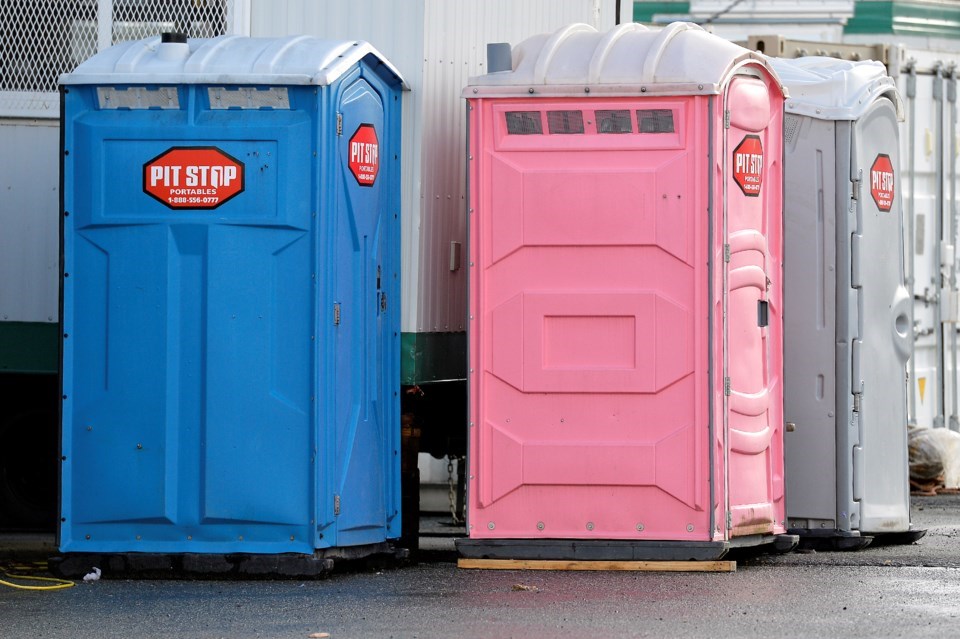The toilet planned for downtown New West may eventually result in a citywide public washroom policy.
On June 17, city council voted 4-2 in support of a recommendation directing staff to proceed with the installation of a permanent free-standing toilet on Begbie Street, between Columbia and Front streets. The structure will be located on the sidewalk on the west side of the street (next to the Interurban condominium).
“The PFT project was developed out of an identified need for a permanent city-owned and operated toilet in the downtown areas as part of the Downtown Livability Strategy (2021),” said a report to council. “This project is considered a pilot project, as it is proceeding in advance of a citywide public washroom strategy as the city does not currently own or operate a similar type of toilet unit.”
During the 90-minute discussion about the project, some councillors suggested there may be a need for an overall plan regarding public restrooms in New Westminster.
Tobi May, the city’s senior manager of civic buildings and properties, said the permanent freestanding toilet planned for Begbie Street is part of the city’s efforts to be a dementia- friendly city and to consider the needs of parents with children, seniors, and people with health concerns who would benefit from the addition of a public toilet.
“If there's a question about a washroom strategy as a whole for the city, that is not work that is currently on our work plan, and it's not resourced,” she told council. “Certainly, staff would be very eager to pursue that work if council were to direct us to do so.
May said the City of New Westminster has washrooms in facilities across the organization that are operated daily by many different departments.
“It's core across departmental work that requires corporate support in the form of communications, signage, and strategy. And that's definitely work that can be done. But that's not what this project is about,” she said. “I think we clearly stated in the report that this is a pilot project is done in advance of a city-wide washroom strategy.”
Coun. Ruby Campbell said she hopes information gathered through the pilot project will help the city identify other locations in the city needing public toilets. She noted that people have also suggested public toilets are needed in Tipperary Park and Uptown New West.
“I think we do need a bathroom strategy, so I'm hoping that the metrics can help in that area,” she said.
Campbell said the Crohn's and Colitis Canada has an app to show people where public bathrooms are located and the city’s open data also has information about the locations of public bathrooms.
“It would be helpful if staff have time to kind of recommend how this can work for other areas in the city as well,” she said of the downtown public toilet. “Our population is only getting older. We know that this is going to be public infrastructure that we need to provide, and I'd hate for us to use our learnings only for one site. I think we need to think bigger.”
Coun. Nadine Nakagawa said she’d support a bathroom strategy, as there’s a “huge need” for toilets for many members of the community. She supported the toilet planned for Begbie Street.
“Are there enough washrooms in this area? No, there's not,” she said of the downtown. “So, I think being really clear on what we're trying to solve, we're not trying to solve the overall washroom deficit in the city, we are trying to add infrastructure that's important.”
Mayor Patrick Johnstone said he was gifted a book by Lezlie Lowe (author of No Place to Go: How Public Toilets Fail our Private Needs), which addressed the issue of public washrooms in North America. He said austerity measures in the past 30 years caused cities to get out of the business of providing public washrooms.
“We downloaded all that responsibility from cities on the private businesses,” he said. “And when the pandemic came along, among other things, that demonstrated to us that wasn't a resilient path to help people in our community who needed this.”
In February 2020, the Peer Network (a group of people who have been directly impacted by the overdose crisis – through their own experiences or those of loved ones) launched an online petition urging the city to provide public washrooms in parts of the city.
The petition, which was presented to city council, states the lack of public restrooms affects people experiencing homelessness because most businesses will not allow non-customers to use their restrooms, and those they can use are only open during certain hours, forcing people experiencing homelessness to use alleys, streets and bushes to relieve themselves. It states that providing porta-potties in certain areas of New Westminster would help keep city streets clean and provide dignity to people living without homes.
“A lot of people, elderly people, have Crohn’s, irritable bowel syndrome. They can’t go out of their house unless they know they are going to be able to go to the bathroom,” a Peer Network member told the Record at the time. “That is limiting them.”




